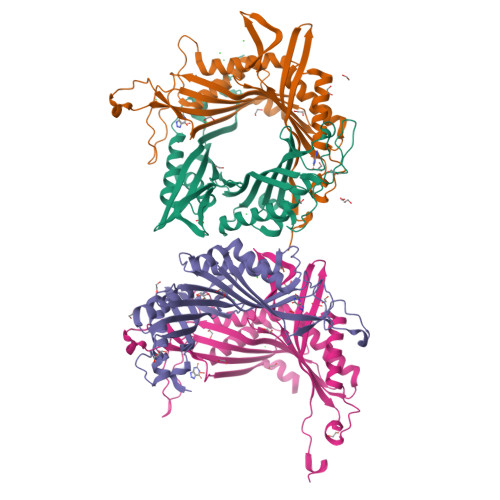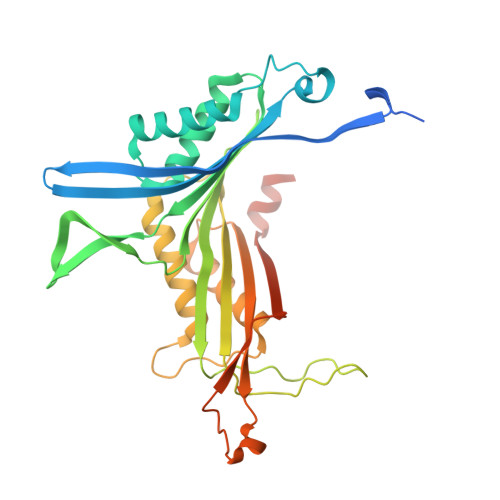Cysteine Enrichment Mediates Co-Option of Uricase in Reptilian Skin and Transition to Uricotelism.
Mori, G., Liuzzi, A., Ronda, L., Di Palma, M., Chegkazi, M.S., Bui, S., Garcia-Maya, M., Ragazzini, J., Malatesta, M., Della Monica, E., Rivetti, C., Antin, P.B., Bettati, S., Steiner, R.A., Percudani, R.(2023) Mol Biol Evol 40
- PubMed: 37695804
- DOI: https://doi.org/10.1093/molbev/msad200
- Primary Citation of Related Structures:
8OFK, 8OH8, 8OIH, 8OIW - PubMed Abstract:
Uric acid is the main means of nitrogen excretion in uricotelic vertebrates (birds and reptiles) and the end product of purine catabolism in humans and a few other mammals. While uricase is inactivated in mammals unable to degrade urate, the presence of orthologous genes without inactivating mutations in avian and reptilian genomes is unexplained. Here we show that the Gallus gallus gene we name cysteine-rich urate oxidase (CRUOX) encodes a functional protein representing a unique case of cysteine enrichment in the evolution of vertebrate orthologous genes. CRUOX retains the ability to catalyze urate oxidation to hydrogen peroxide and 5-hydroxyisourate (HIU), albeit with a 100-fold reduced efficiency. However, differently from all uricases hitherto characterized, it can also facilitate urate regeneration from HIU, a catalytic property that we propose depends on its enrichment in cysteine residues. X-ray structural analysis highlights differences in the active site compared to known orthologs and suggests a mechanism for cysteine-mediated self-aggregation under H2O2-oxidative conditions. Cysteine enrichment was concurrent with the transition to uricotelism and a shift in gene expression from the liver to the skin where CRUOX is co-expressed with β-keratins. Therefore, the loss of urate degradation in amniotes has followed opposite evolutionary trajectories: while uricase has been eliminated by pseudogenization in some mammals, it has been repurposed as a redox-sensitive enzyme in the reptilian skin.
Organizational Affiliation:
Department of Chemistry, Life Sciences and Environmental Sustainability, University of Parma, Parma, Italy.






















